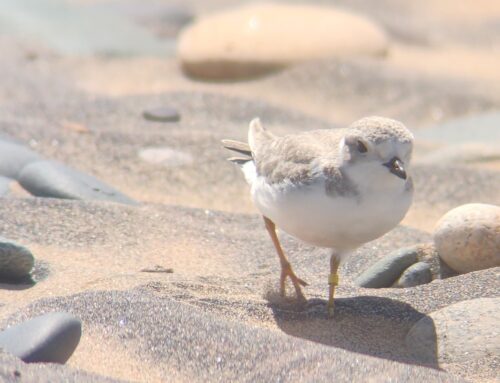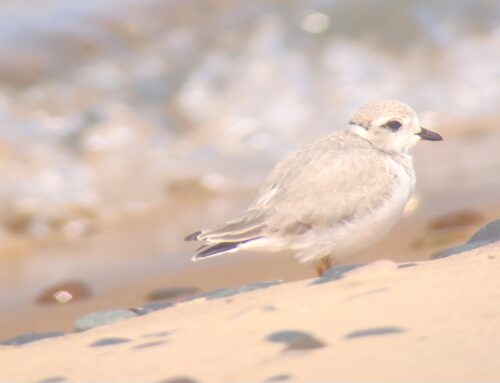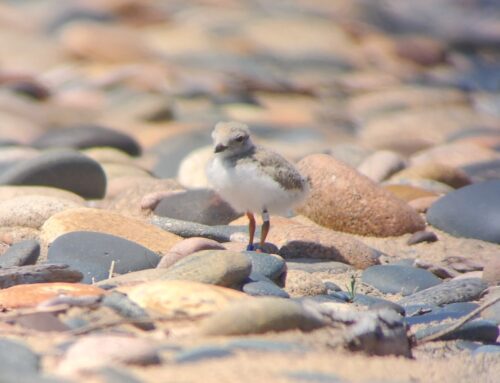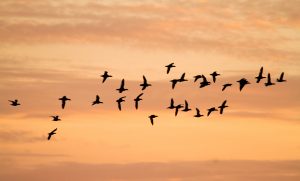
White-winged Scoters by Skye Haas
Greetings! Here is the last Whitefish Point Sightings Report for the spring 2017 season. But first I just want to thank and congratulate the WPBO staff for their hard work and long hours that they put in this season. From freezing temperatures to hordes of biting insects, the WPBO team persisted through the adverse conditions and collected another robust season of data. And what a season it was! We are still finalizing our season’s numbers but it would appear we recorded 224 species of birds and around 115,000 individuals this spring! Thanks also must go to the team at Dunkadoo for helping WPBO transition into electronic data collection; not just for making the counter’s jobs a lot easier managing their data, but in allowing WPBO to live stream the counts so you too dear reader could follow along with what our counters were seeing!
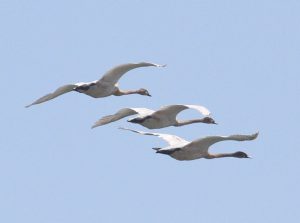
Trumpeter Swans by Skye Haas
So the Waterbird Count was quickly drawing to a close with the peaking of WHITE-WINGED SCOTER migration, but in addition to a couple more scoter flights including 122 on the 27th, the main waterfowl event was a huge goose flight. CANADA GEESE have bimodal migration peaks here at Whitefish Point, with one in early/mid April when the breeding birds are headed north, and a second one that occurs in late May/early June when non-breeding “molt-migrants” head to James and Hudson Bays to molt their flight feathers and take advantage of the fresh young grasses sprouting on the edge of these bays. On the 29th, these molt-migrant geese roared over the Point in large numbers rarely recorded here. Even more impressive is that most of the 6,106 geese that flew by that day, most of them came in less than an hour! It was an absolute pandemonium of geese that kept the counters hopping to stay caught up! A few goodies plucked from the flocks included a GREATER WHITE-FRONTED GOOSE, 3 TRUMPETER SWANS and 3 additional unidentified Swans. Another 1,459 CANADA GEESE were recorded on the 30th, and another GREATER WHITE-FRONTED GOOSE on the 31st. Loons were really down to a trickle in this final week, with the biggest push being 15 RED-THROATED LOONS on June 1st.
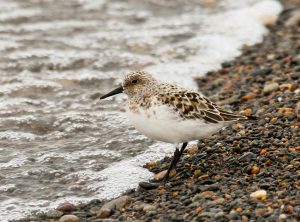
Sanderling by Skye Haas
The other big flight of waterbirds occurred on the 27th, when primarily on an evening flight 755 WHIMBREL flew past the Point. Likely owing to the wet conditions of the last week, shorebird migration was rather visible, with the 31st recording 80 RUDDY TURNSTONES, 68 SEMIPALMATED SANDPIPERS, 57 SANDERLINGS and 10 WHITE-RUMPED SANDPIPERS.
Conversely, the wet weather that made for good shorebirding, was the death knell for the season’s hawk watch. The 27th was the last day when triple digit numbers were tallied for the raptors with a farewell flight of 112 SHARP-SHINNED HAWKS and 698 BROAD-WINGED HAWKS along with 2 ROUGH-LEGGED HAWKS. Hawks, particularly 1st year BROAD-WINGED HAWKS will likely make a few more decent flights into June on favorable conditions like on the 2nd when 180 were counted.
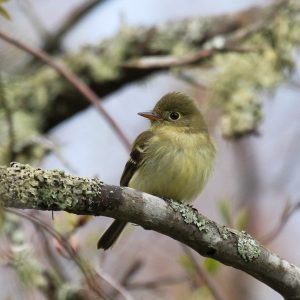
Yellow-bellied Flycatcher by Skye Haas
Passerine numbers were overall good through the end of the season, for flycatchers, most did not even arrive until the last few days with EASTERN WOOD-PEWEE on the 27th, ALDER FLYCATCHERS showing up on the 28th, and OLIVE-SIDED FLYCATCHER on the 1st. Good numbers of YELLOW-BELLIED FLYCATCHERS were seen daily in the last week of the count. Warblers continued to have a decent showing with good numbers on the 30th and 31st and again on the 2nd with 15 species being reported including CAPE MAY, BLACKPOLL, BAY-BREASTED and MOURNING. PHILADELPHIA VIREOS were also recorded through the 2nd.
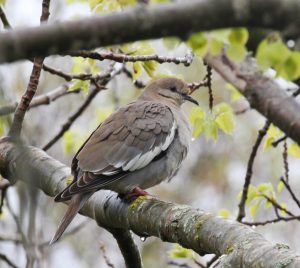
White-winged Dove by Skye Haas
The last few days of the season have a reputation for delivering some rarity to the Point. Some years, it doesn’t pan out, but on May 30th, a WHITE-WINGED DOVE and 4 EURASIAN TREE SPARROWS were discovered at the Owl’s Roost feeding station. All continued to the next day when also a LARK SPARROW was found on the edge of the beach. The EURASIAN TREE SPARROWS continued into June, when also a 1st year male ORCHARD ORIOLE made a minute long visit to the feeders before disappearing. However in what has already been a great spring for vagrants, the bird of the season arrived. On the morning of the 3rd a male SHINY COWBIRD was found at the feeding station and was observed well all day and again on the 4th. This fantastic sighting represents a 1st state record for Michigan and one of only a handful away from the southeast US. A great bird and a great way to end our season! Stay tuned though, the Summer Owl Banding program starts up in a few weeks and after that, the fall waterbird count on August 15th. Hope to see you then!
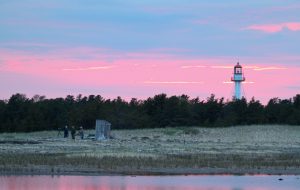
Sunset on the Waterbird Count


